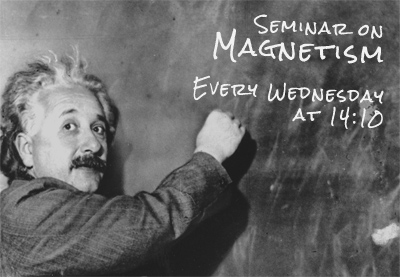Seminar on Magnetism
Group of Magnetism at the Department of Condensed Matter Physics
of Charles University and MGML has a pleasure to invite you to attend the joint seminar
on 17th May 2023 at 14:10
at Faculty of Mathematics and Physics of Charles University, Ke Karlovu 5, 121 16 Praha 2
Lecture room F2
Ross Colman
DCMP, Faculty of Mathematics and Physics, Charles University, Ke Karlovu 5, 121 16 Prague 2
Evolution of local structure across the heavy rare earth zirconate oxides, A2Zr2O7
Ross Colman » Evolution of local structure across the heavy rare earth zirconate oxides, A2Zr2O7
DCMP, Faculty of Mathematics and Physics, Charles University, Ke Karlovu 5, 121 16 Prague 2
Online link: cesnet.zoom.us Ask R. Colman for password.
Location: Lecture room F2, Ke Karlovu 5
Oxide ion conductors require migration pathways for ions to pass through the lattice, typically via hopping through vacancy sites. The ease of this migration is dictated by both the bonding strength, and the structure (relative vacancy locations), with these characteristics guiding the ion conductivity and subsequently the minimum useful working temperature. The rare-earth oxides, with general formula A2B2O7 (where A3+ is a rare-earth ion, and B4+ is a transition or p-block metal), have shown reasonable ion conductivity properties. These oxides show distinct structure types dependent on the A/B ion size ratio: rA/rB > 1.46 result in an ordered pyrochlore structure, and rA/rB < 1.46 results in a disordered defect-fluorite structure [1]. Probes of the ion local structure (spectroscopic methods), however, don’t show an abrupt change across this distinct structural-border [2]. Understanding the subtleties of the structural changes through this family is important for explaining the observed ion-conductivities [3]. In this short seminar I will show the results of our recent efforts to use a combination of neutron and X-ray diffraction, with small box pair-distribution-function analysis (xPDF and nPDF) to better understand the local structure evolution across the heavy rare-earth zirconates, A2Zr2O7.
References
[1] J. Shamblin, M. Feygenson, J. Neuefeind, et al., Nat. Mater. 15, 507 (2016).
[2] P. E. R. Blanchard, R. Clements, B. J. Kennedy, et al., Inorg. Chem. 23, 41 (2012).
[3] M. Shafique, et al., J. Alloys Compd. 671, 226 (2016).


